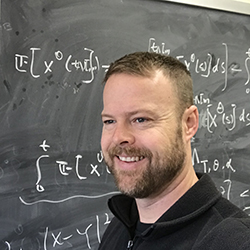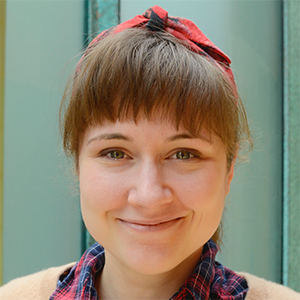
A Brief Introduction to Stochastic Reaction Networks
ZOOM ID: 997 8258 4700 (Biomedical Mathematics Online Colloquium) (pw: 1234)Abstract: TBA

Abstract: TBA

Abstract: Cellular, chemical, and population processes are all often represented via networks that describe the interactions between the different population types (typically called the "species"). If the counts of the species are low, then these systems are often modeled as continuous-time Markov chains on the d-dimensional integer lattice (with d being the number of species), …
We will discuss about "Rhythmicity is linked to expression cost at the protein level but to expression precision at the mRNA level", David Laloum, and Marc Robinson-Rechavi, PLoS computational biology 18.9 (2022): e1010399. Abstract: Many genes have nycthemeral rhythms of expression, i.e. a 24-hours periodic variation, at either mRNA or protein level or both, and …

Abstract: We’re all familiar with sleep, but how can we mathematically model it? And what determines how long and when we sleep? In this talk I’ll introduce the nonsmooth coupled oscillator systems that form the basis of current models of sleep-wake regulation and discuss their dynamical behaviour. I will describe how we are using models …
We will discuss about "Inferring microenvironmental regulation of gene expression from single-cell RNA sequencing data using scMLnet with an application to COVID-19", Cheng, Jinyu, et al., Briefings in bioinformatics 22.2 (2021): 988-1005. Abstract: Inferring how gene expression in a cell is influenced by cellular microenvironment is of great importance yet challenging. In this study, we …
We will discuss about "Model Reduction for the Chemical Master Equation: an Information-Theoretic Approach", Öcal, Kaan, Guido Sanguinetti, and Ramon Grima., arXiv preprint arXiv:2210.05329 (2022). Abstract: The complexity of mathematical models in biology has rendered model reduction an essential tool in the quantitative biologist's toolkit. For stochastic reaction networks described using the Chemical Master Equation, commonly …

Shift workers experience profound circadian disruption due to the nature of their work, which often has them working at times when their internal clock is sending a strong signal for sleep. Mathematical models can be used to generate recommendations for shift workers that shift their body's clock to better align with their work schedules, to …

Wearable analytics hold far more potential than sleep tracking or step counting. In recent years, a number of applications have emerged which leverage the massive quantities of data being amassed by wearables around the world, such as real-time mood detection, advanced COVID screening, and heart rate variability analysis. Yet packaging insights from research for success …

Cells make individual fate decisions through linear and nonlinear regulation of gene network, generating diverse dynamics from a single reaction pathway. In this colloquium, I will present two topics of our recent work on signaling dynamics at cellular and patient levels. The first example is about the initial value of the model, as a mechanism …
We will discuss about “PI-VAE: Physics-Informed Variational Auto-Encoder for stochastic differential equations”, Zhong, Weiheng, and Hadi Meidani, Computer Methods in Applied Mechanics and Engineering 403 (2023): 115664. Abstract We propose a new class of physics-informed neural networks, called the Physics-Informed Variational Auto-Encoder (PI-VAE), to solve stochastic differential equations (SDEs) or inverse problems involving SDEs. In …

The circadian clock orchestrates a vast array of behavioral and physiological processes with a 24-hour cycle, enabling nearly all organisms -- from bread mold to fruit-flies to humans -- to anticipate and adapt to the Earth's day. Entrainable by environmental cue, the rhythm itself is generated by a self-sustained molecular oscillator present in nearly every …
We will discuss about “Detecting critical state before phase transition of complex biological systems by hidden Markov model”, Chen, Pei, et al. Bioinformatics 32.14 (2016): 2143-2150. Abstract Motivation: Identifying the critical state or pre-transition state just before the occurrence of a phase transition is a challenging task, because the state of the system may …